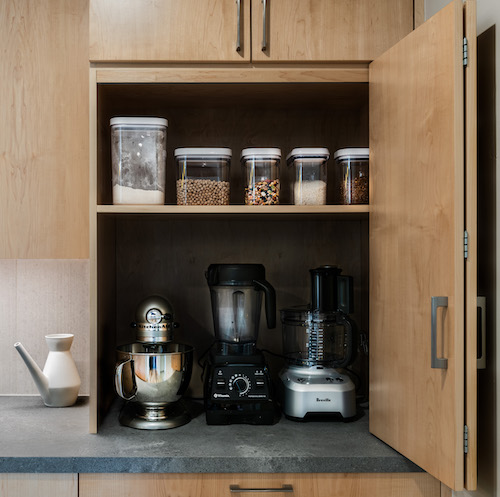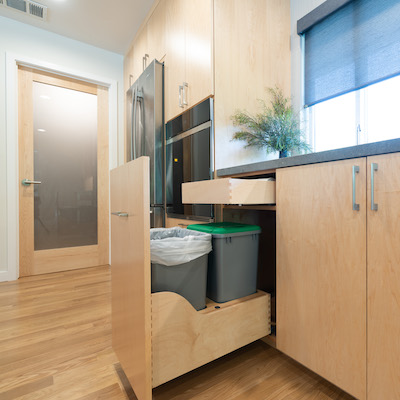Here at MAK, many, many of the projects that we take on involve kitchen remodels. Davis and its surrounding areas experienced a massive population and housing boom in the later half of the 1900s, and many of the homeowners we work with are fed up with trying to navigate their kitchens that haven’t been updated in decades. While many of us may not think much deeper than “I have no space to cook and my countertops are old enough to go to college”, there’s something fascinating and educational about the way our kitchen needs, more than any other room in the home, have evolved over time. The way we design our kitchens not only changes to match current style trends, but also reflects our era’s rapidly evolving technology and our values within our current socio-cultural context. This is all just a fancy way of saying that, whether we realize it or not, our kitchens really are a great representation of how we are constantly adapting and changing.
From the Beginning…
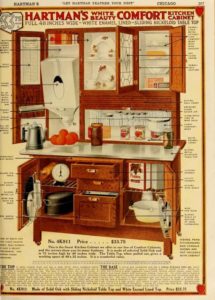 The first real American kitchens started to take shape in the 1910s, when indoor electricity was beginning to become common, with the Hoosier Cabinet. The Hoosier which was a standalone unit similar to a china hutch, but had built-in counters, spice racks, and pot and pan storage. They were incredibly popular in their heyday and paved the way for the era of integrated cabinets we now know.
The first real American kitchens started to take shape in the 1910s, when indoor electricity was beginning to become common, with the Hoosier Cabinet. The Hoosier which was a standalone unit similar to a china hutch, but had built-in counters, spice racks, and pot and pan storage. They were incredibly popular in their heyday and paved the way for the era of integrated cabinets we now know.
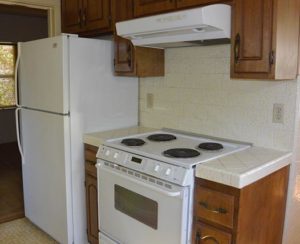
We began to see the first examples of this in the 20’s. Kitchens were modest and enclosed with a few appliances. These small, modest spaces are common until around the 1950’s. When you think about what was happening in America at the time, it makes sense- we went through two World Wars and one Great Depression, so money was tight for most people. This is also the period where the “housewife and the breadwinner husband” trope began to take shape. Appliances were much smaller than they are now- if you’ve ever seen a modern refrigerator like the one pictured here crammed into a corner of a 1920’s kitchen, it looks almost laughably out of place.
To the Middle…

Kitchens really begin to evolve from the 1950s onward. Sprawling suburban developments were cropping up everywhere, thanks to government subsidized veteran housing. Homes were getting bigger and, with the birth of the Baby Boomer generation, so were families. Women were also beginning to move out of the domestic sphere and into the workplace. It is possibly because of this shift that we see a ton of galley-style kitchens from this era- where the living area is separated from the kitchen, but an opening between the upper and lower cabinets on one wall allows for the chef to look through and not feel completely isolated.
To Now
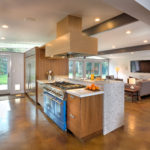
This leads us into the kitchens we now know and drool over on HGTV- the kitchens with massive stainless steel appliances, islands with informal seating, and an open floor plan connecting the space to the whole house and allowing the kitchen to become a showcase of personality. This is also largely thanks to advances in climate control technology like range hoods which help keep cooking odors from taking over the whole house. We now live in a time where typical gender roles are relaxing, task division finds more men passionate about food and its preparation, and working in the kitchen requires space for two. What began as a small, service driven space design solely for preparing meals has evolved into a space where all the activities of modern everyday life can unfold with joy.
That isn’t to say that this is the end of the evolution of the kitchen- history has proven that it won’t be. We’re already beginning to see some pushback on the open floor plan, the main critique being that it doesn’t allow for much privacy, and when the inevitable post-cooking messy kitchen happens, it’s difficult to conceal. My point is simply that the way we design our spaces can reveal some wonderful truths about the way we live our lives, and if we pay attention, help us understand how to design for a better future.


